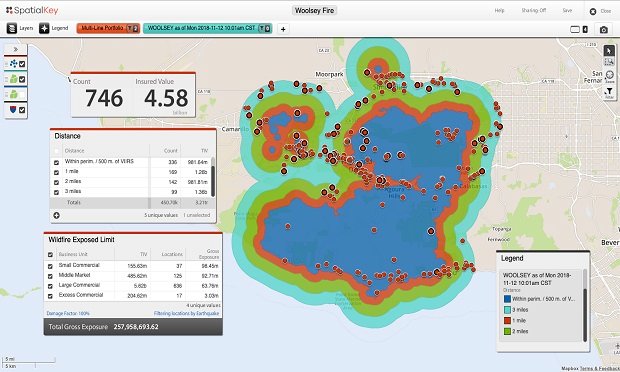Editor's Note: This content includes excerpts from aneditorial webinar hosted by PC360, "Faster Claims Service: How theRight Technology Can Deliver the Right Results."
|In an industry that's been labeled as technologicallyconservative, if not downright technophobic, a competitive edge iswell within reach for insurance carriers that are willing toembrace a new generation of tech tools. But are carriers preparedto seize the opportunity?
|The insurance industry "is not typically a first adopter" oftechnology, acknowledges Patti Griffin, chief product officer, DuckCreek Technologies. But because consumers today expect an elevated,integrated and digitally robust experience, for many carriers,replacing legacy systems isn't an option, it's a strategicimperative.
|New tools are readily available, she says, to replace or upgradeoutdated, inefficient legacy systems with systems whoseflexibility, simplicity and automation can translate into tangiblebenefits to insurer and insured alike. So where to start?
|Claims service represents a logical target for tech investment,says Matthew Josefowicz, President and CEO of Novarica, whichprovides technology consulting services to the insurance industry."Claims is the moment of truth for the insurance product, and sohaving a positive claims experience is absolutely critical tomaintaining a relationship with the customer past that claim."
|From hardware to software to the cloud, insurance carriers haveaccess to a growing range of tech tools to strengthen theirinternal claims processes, and to enhance the overall claimsexperience they deliver to customers. Here Griffin and Josefowiczoffer nine best practices for focusing and maximizing theirinvestment while minimizing disruption:
|1. Make automating and streamlining internal workflowsand knowledge-sharing a top priority. The backbone of astrong claims service operation, according to Griffin, is a systemthat allows for extensive knowledge-sharing across departments,accommodates parallel claims processing, and is flexible enough toreadily incorporate new processes and workflows.
|2. Embrace a "test-and-learn" mindset. Don't beshy about testing new processes and workflows, Griffin says. Pilotthem, then refine and implement them if they show promise, anddiscard them if they don't.
|3. Emphasize enhanced access to data for allstakeholders. Internally, that means giving relevantparties a 360-degree view of the customer (a complete view of theirinteractions with the company), along with the ability to accessany third-party data that can make processing a claim moreefficient. "Having access to the information you need, at the pointof need, is where responsiveness and efficiency comes into play,"Griffin says.
|A system capable of pushing critical claims information toadjusters in the field when they need it, so they don't have tointerrupt their work, is a big part of the equation. So, too, isproviding customers with easy, on-demand access to important claimsdata and documents, Josefowicz notes. Doing so eases customeranxiety, which leads to a more positive overall claimsexperience.
|4. Move to strengthen communications withcustomers. Devices and channels such as smartphones andsocial media can provide a win-win for customers and carriersalike. A claims system can be configured to accommodate thistechnology for purposes such as pushing a proactive email, textmessage or tweet to customers about a pending weather event, forexample, or for accepting claim-related photos and informationprovided by a claimant.
|5. Arm field staff with appropriate tools. It'svital, Griffin says, to provide adjusters with devices and appsthey can use in the field that receive 'alerts' about priorities aswell as record, access and manage customer and claim information,and upload and download documents, "so they can service customersat the point of need." This technology can accelerate the claimsprocess, improve accuracy and reduce cycle time.
|6. Deliver a seamless, omni-channel claims experience tocustomers. Smartphone, laptop or desktop computer, tablet— "customers expect access [to their insurer] regardless of thedevice or the method, and they want the ability to self-serve fromany of their devices," Griffin points out. Thus carriers needsystems that provide customers with an integrated multichannelexperience, whether they prefer interacting via traditional ordigital channels.
|That experience also needs to be consistent across channels."There's nothing worse than a customer getting a notification inthe mail, then going to the website and having that [notification]information not be reflected there. … It makes it feel like thecompany doesn't have its act together," Josefowicz says.
|A carrier's brand essentially is a promise to deliver aconsistent, coherent customer experience. Failing to deliver thatexperience breaks the promise and tarnishes the brand, according toJosefowicz.
|7. Embrace the cloud. Carriers are beginning tomove core systems and noncore operations to a cloud-based, SaaS(software as a service) model and are realizing benefits aroundgreater transparency and predictability of costs and defined andcontractual SLAs. Insures have the option of connecting on-premisesystems with applications in the cloud. While there are advantagesto having all applications accessed via the cloud, "it doesn't haveto be an all or nothing strategy," notes Griffin.
|8. Choose systems and software providerswisely. Look for companies that have a strong commitmentto R&D, as well as an active user group to gather input fromthe customer community. Also look for software and systems that areflexible, "because with flexibility comes agility," Griffin says."And get your hands on the software … understand how you'd makechanges to the system … and using the configuration tools will showwhat you can expect from the system regarding flexibility andsupport."
|When evaluating systems in which to invest, "build for change,"states Josefowicz. "The pace of change will continue to accelerate"and the 10-year capital depreciation assumption associated withlegacy system investments no longer applies in today's tech-drivenworld.
|9. Don't settle for minor improvements when majorenhancements are within reach. When replacing legacyclaims systems, reframe your mindset, Griffin suggests. "Don'tnecessarily think about the way you process business today, butthink about how you want to process claims and have claimsflow through your organization. Look at the software packages inthat context. What is it that you want to accomplish with thatfuture vision."
|Because as Josefowicz points out, "Doing legacy replacementwithout an ambition for changing processes is rarelyworthwhile."
|Based in Denver, David Port writes frequently aboutbusiness, finance and entrepreneurship. He's also the author of twobooks for expectant and new fathers.
Want to continue reading?
Become a Free PropertyCasualty360 Digital Reader
Your access to unlimited PropertyCasualty360 content isn’t changing.
Once you are an ALM digital member, you’ll receive:
- All PropertyCasualty360.com news coverage, best practices, and in-depth analysis.
- Educational webcasts, resources from industry leaders, and informative newsletters.
- Other award-winning websites including BenefitsPRO.com and ThinkAdvisor.com.
Already have an account? Sign In
© 2024 ALM Global, LLC, All Rights Reserved. Request academic re-use from www.copyright.com. All other uses, submit a request to [email protected]. For more information visit Asset & Logo Licensing.








